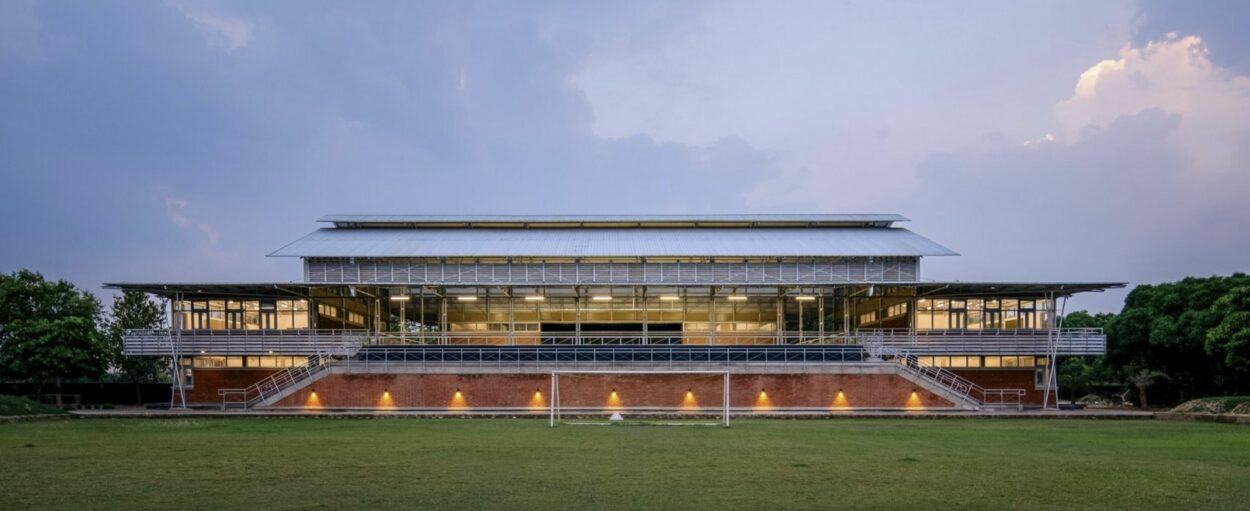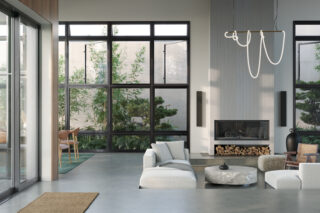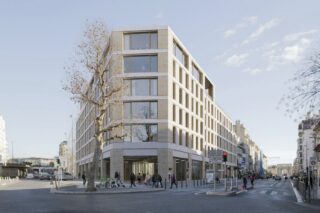India’s architecture is often visualized as an eclectic tapestry, woven with rich history and culture from various origins. Here are some of India’s most novel contemporary landmarks within architectural traditions.
Open and organically shaped spaces, repurposed and reclaimed materials, local crafts, and a seamless blend with nature; those common features intrigue the eye when looking at India’s state-of-the-art architecture. What is currently motivating designers in India? We look closer, starting from the historical landmarks to the most novel constructions.
India’s Architectural Landscape: From Mughal Opulence to Contemporary Marvels in 2023
Numerous observers deem India’s architectural treasures, particularly those emanating from Mughal architecture—the type of Indo-Islamic architecture developed by the Mughals in the 16th, 17th, and 18th centuries—, as exceptionally captivating. This distinguished architectural style, epitomized by the iconic Taj Mahal and the Red Fort in the northern region of the country, serves as a testament to the prowess of Indo-Islamic architecture. These structures symbolize the harmonious amalgamation of Persian, Turkish, and Indian design elements during the concluding stages of the Middle Ages.
Notably, Mughal architecture represents merely one facet of India’s rich architectural heritage. The country boasts a plethora of historical architectural trends, beginning with the city plans of the ancient Indus Valley civilization and extending to Buddhist stupas. Additionally, India showcases masterfully crafted rock-cut caves, exemplified by the sites of Ellora and Ajanta.
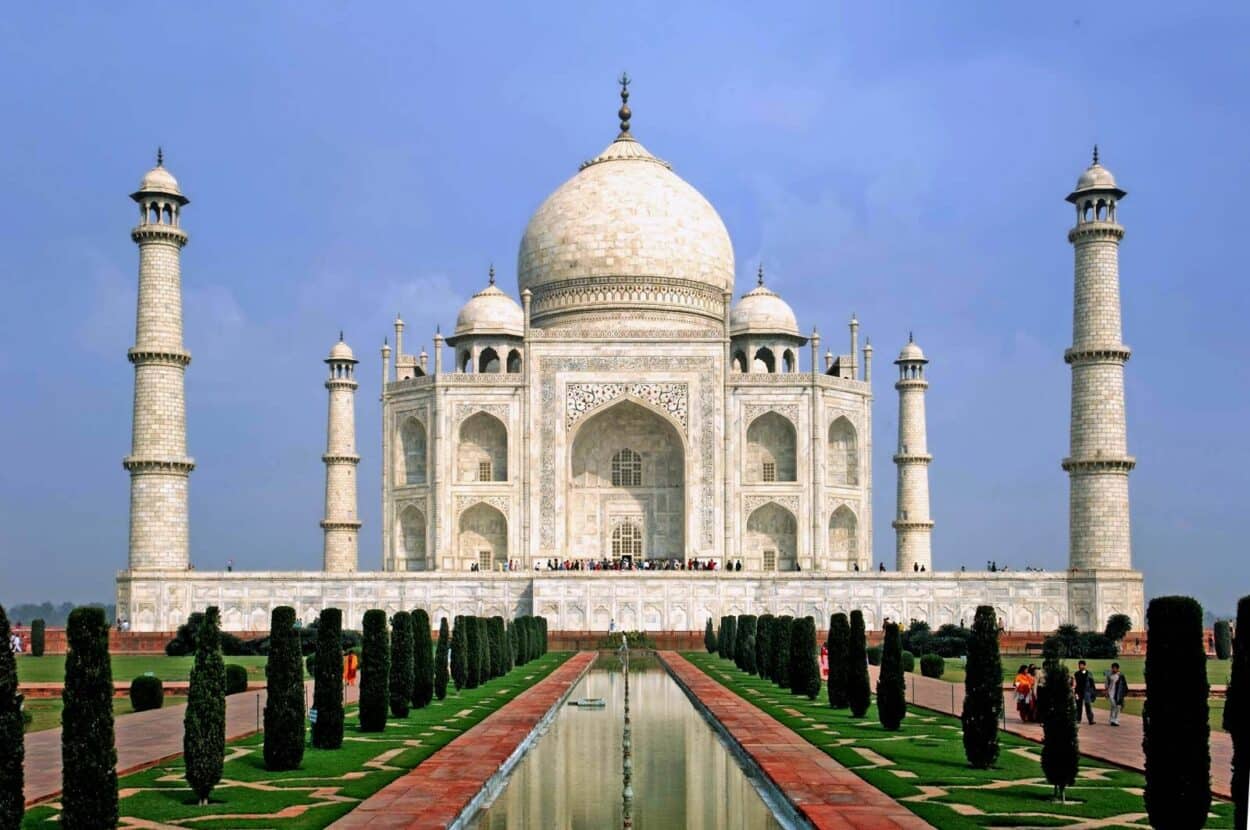
In classical Indian architecture, Hindu temples stand out above all, with their very own style depending on the region. The forts and palaces of Rajasthan have one prominent feature above all in common: opulence. Rajput architecture is therefore on almost every travel itinerary. It is also hard to imagine India’s rich architectural history without the colonial era with its predominantly British influences – visible, for example, in the Victoria Memorial or the Gateway of India in Kolkata. Of course, India’s internal conflicts with other emperors have also left marks on many buildings.
However, with India’s independence in 1947, a fascinating change and transition to modern architecture has taken place: Architects such as Le Corbusier and contemporary designers have produced a variety of styles that seamlessly blend tradition and modernity. How about today? The following architectural projects have all been completed in 2023 and excel with exceptional features such as a strong focus on sustainability in the design and construction process, the seamless integration of nature, and architectural inspiration from other countries and cultures worldwide.
White Curvilinear Dream: Pravaah Workspace in Gujarat
At first glance, the Pravaah Workspace, built in 2023, undeniably resembles the famous Cycladic architecture in Greece: white, round, and organically shaped stone walls invite you in like a cave in a rock. And just like there, they provide cooling refreshments in the hot and humid summers of Gujarat, in the far north-west of India. This latest 200 sqm project designed by The Grid Architects, emphasizes simplicity and natural flow.
The elegant white, curvilinear theme of the Pravaah office layout is continued throughout all the rooms. Sunlight, captured by skylights, makes the interior bright. Biophilic elements such as plants and water features are integrated into the concept. The designers chose locally produced ferrocement as a single construction material to facilitate sustainable construction. Not least, the building complex adjusts to the climate of South East India.
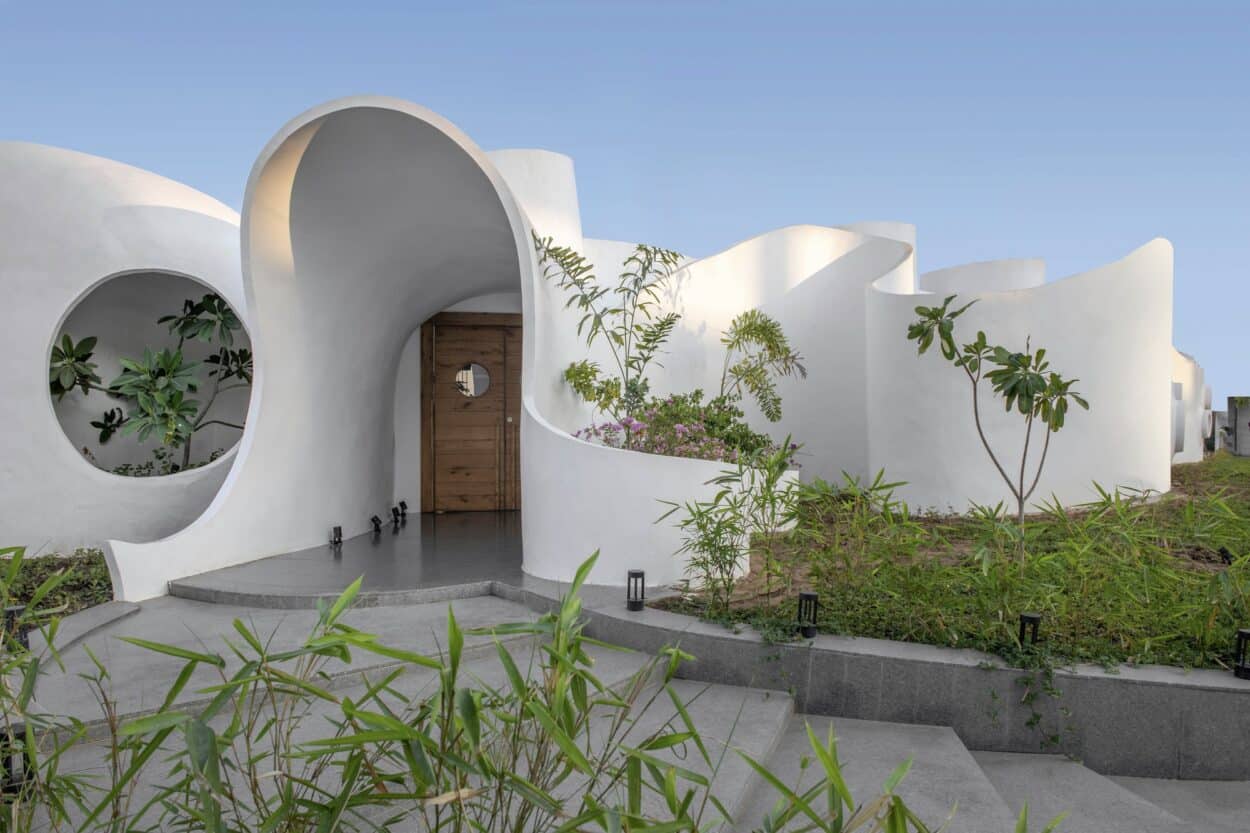
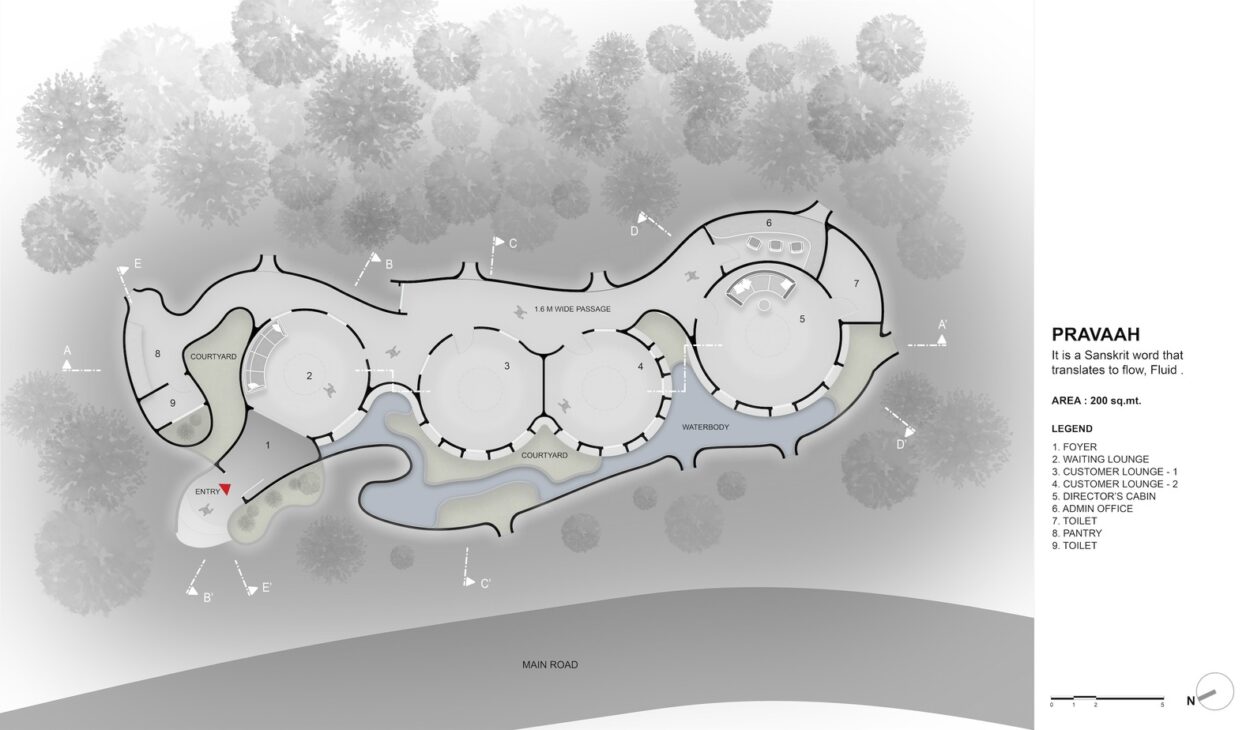
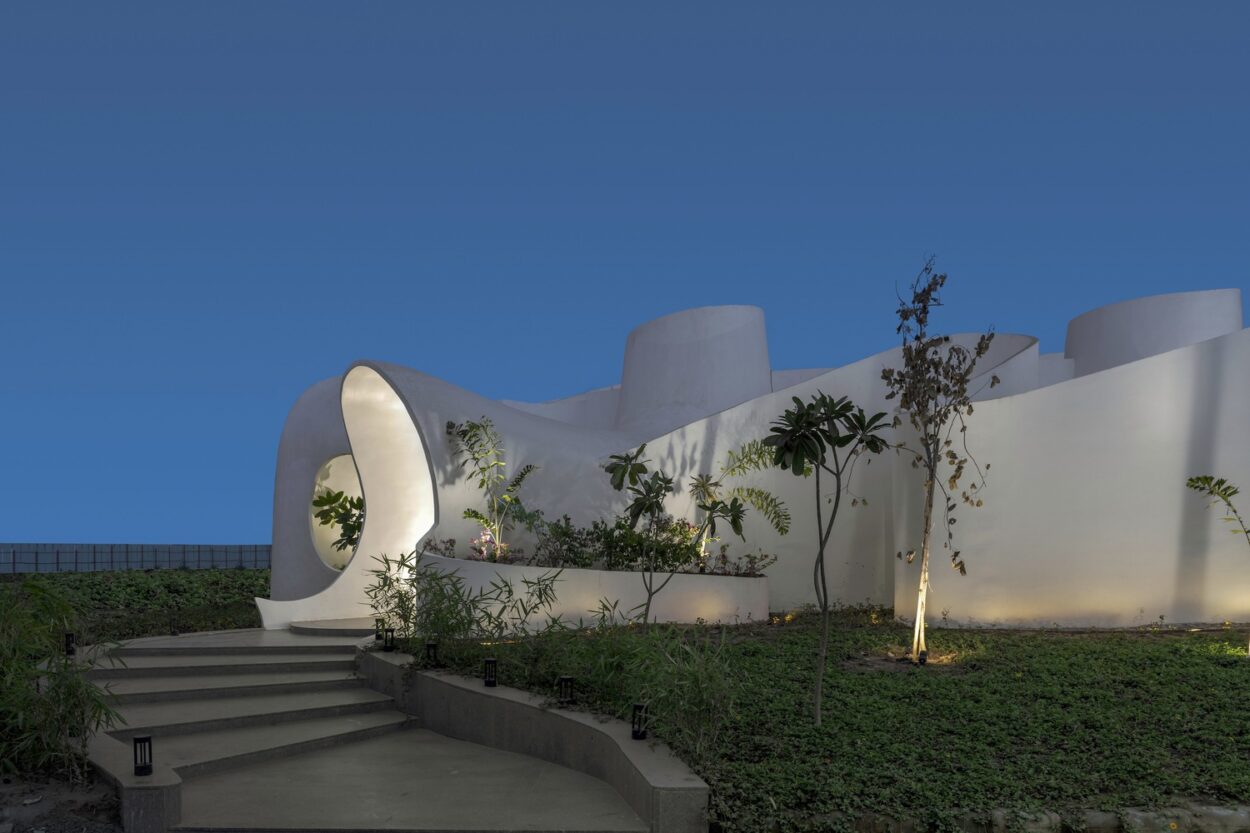
Balinese Inspirations: Mayaa Tropical Retreat
With Mayaa, the studio Aslam Sham Architects created a Balinese-themed getaway. Amidst a lush palm plantation, outside of Coimbatore in the South-Indian state of Tamil Nadu, the retreat excels with an atmosphere of calm and tranquility evoking serenity through earthy colors and textures. The chosen materials draw from Balinese architecture and mirror the tropical retreat concept.
The resort is designed in a tropical modernist style. Its location on a cliff overlooking the river with a panoramic view integrates nature as an essential part of the design concept. The designers are indeed targeting a fusion between architecture and nature to let boundaries blur between built and natural elements, best showcased by the infinity pool that seamlessly blends with the landscape.
A Distinct Connection to Nature: S NINE in Pune
In the lively city of Pune in the western Indian state of Maharashtra another innovative workspace project has been completed in 2022: S NINE is not only a co-working space but also an architectural novelty showcasing a rediscovery of human connection to nature. S NINE was designed by the architecture studio PMA Madhushala. Unlike traditional coworking offices, this particular one is wrapped in a grid facade of red sandstone planters and fenestrations. The concrete modules allowed for an easy, organic construction arranging locally crafted stone fins with planters on each module, making the visual surface all the more interesting. Thus, S NINE appears like a breathing organism, fully incorporating nature. This way, co-workers can see, feel, and touch the plant life inside and outside the building. A sense of belonging is created. Unnecessary to say that this is indeed a counterstatement against the global trend of air-tight, fully-glazed offices.
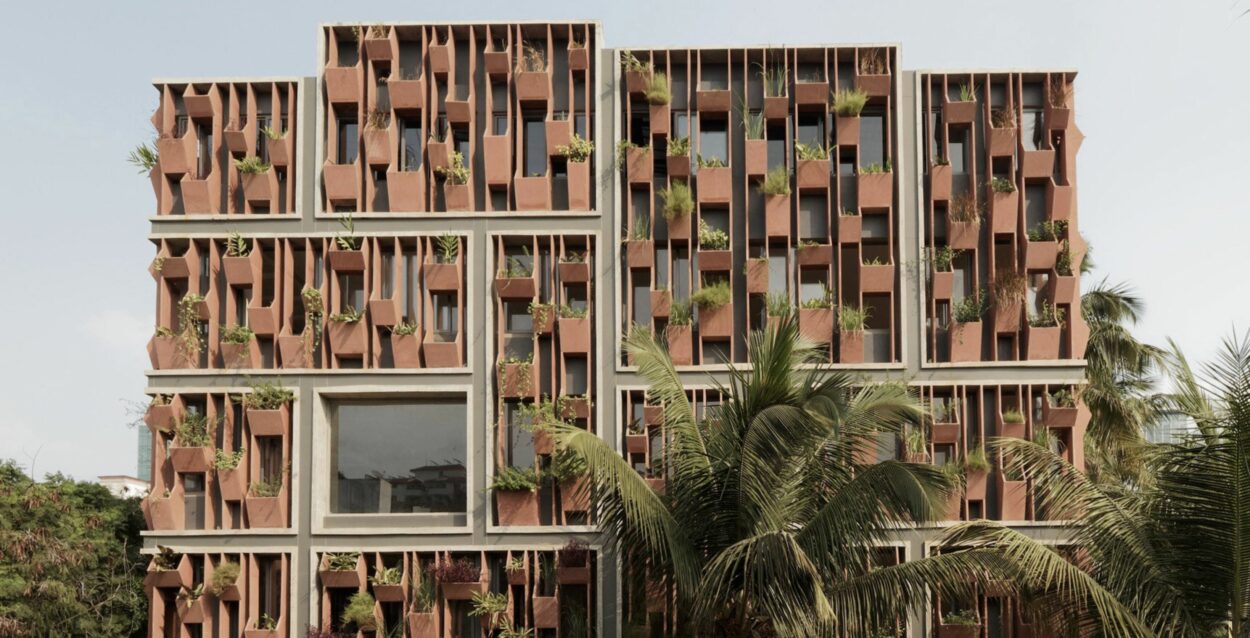
Sustainability: Takshila Academy Activity Center
In the city of Akbarpur, close to the Nepalese border in Uttar Pradesh, a former oil factory has been redesigned to become a sports and activity center that is attached to a primary and senior school campus. The goal: harmoniously joining education and eco-consciousness. Shaily Gupta from sga-studio acted as the creative head behind the sustainability design project. The architect repurposed materials from the former factory for the construction using f.i. reclaimed steel trusses, louvers, columns, and pipes to compose the main frame of the center. The environmentally friendly construction endeavors to implement contemporary aesthetics. The open construction with lightweight metal puff panel roof and louvered façade nevertheless protects against wind and sun and lets refracted light enter the interiors.
